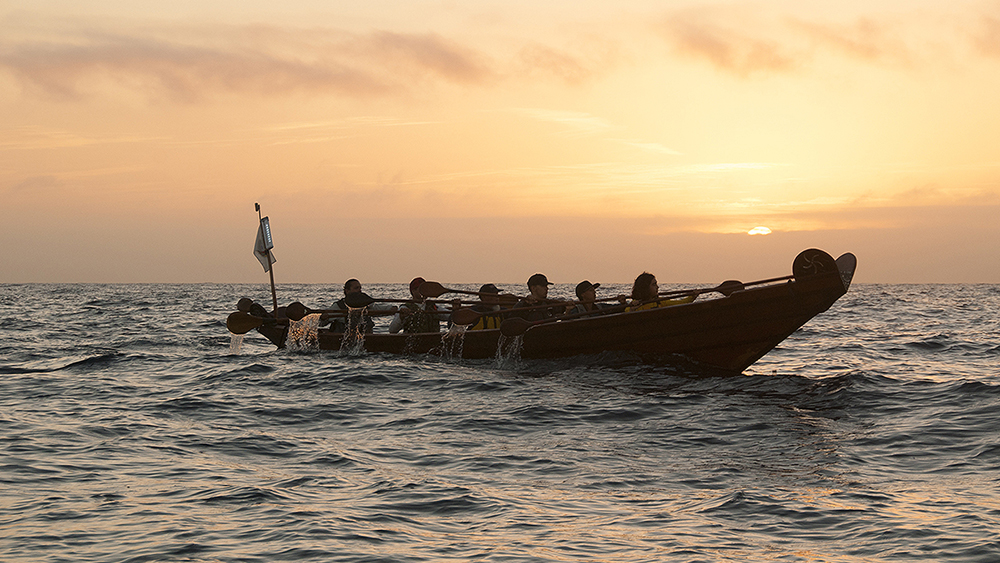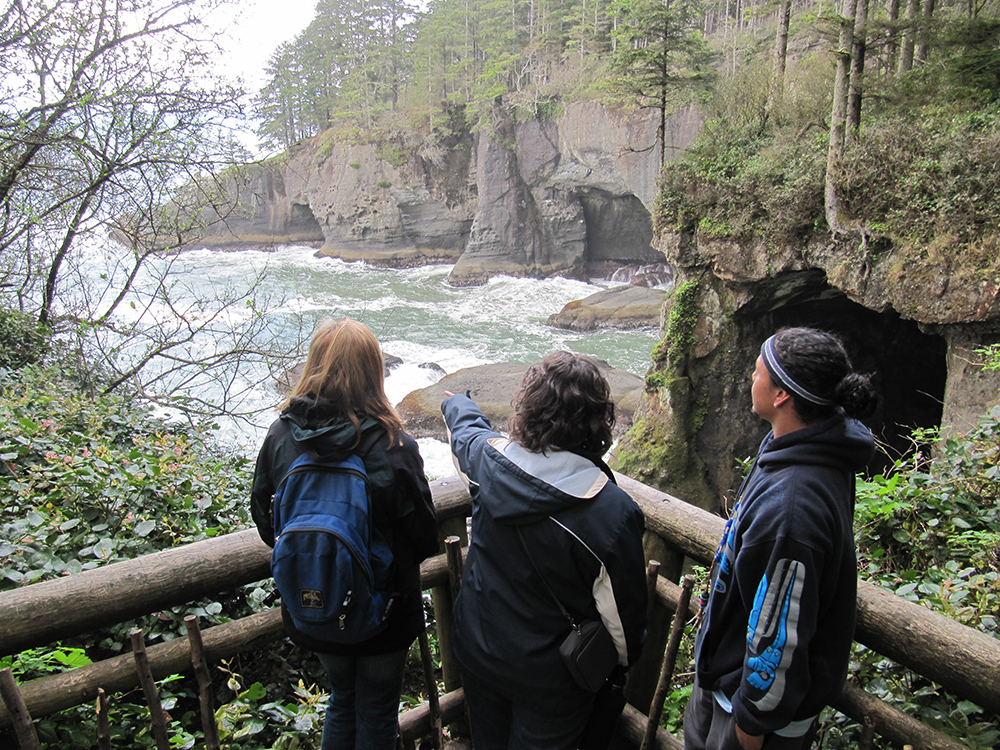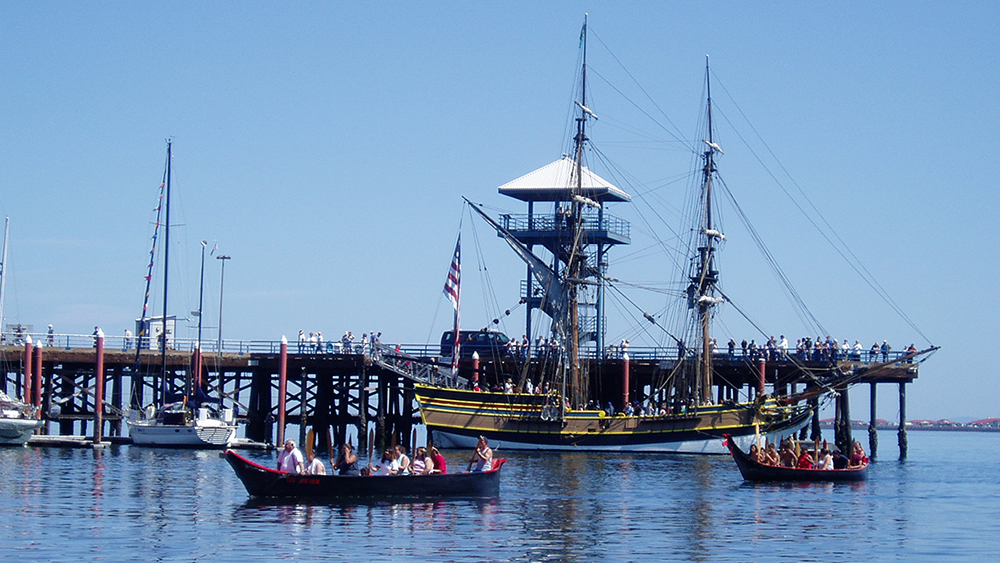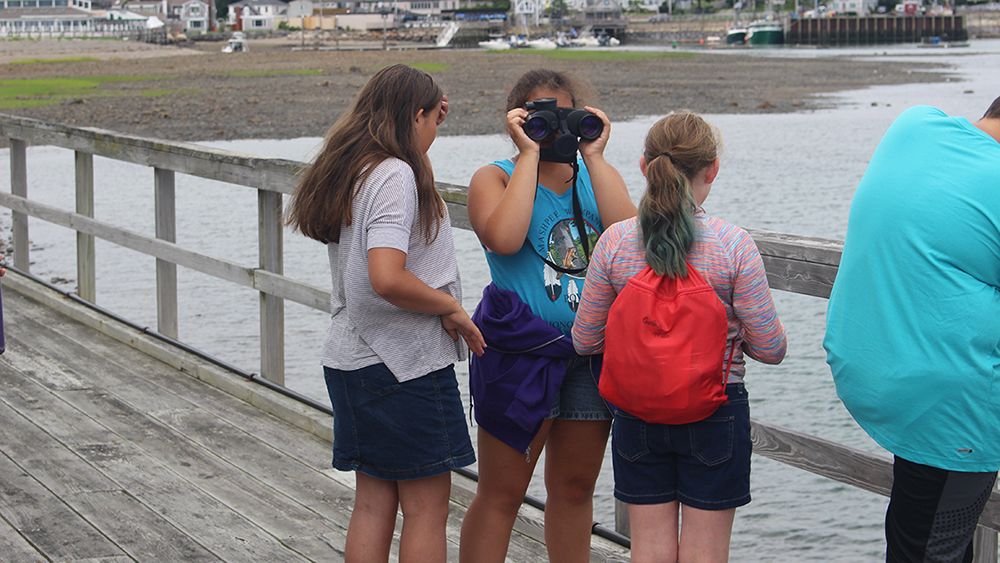A shared sense of place: Celebrating Native American Heritage Month in sanctuaries
By Elizabeth Moore
November 2017
In a 1985 column for the New York Times, indigenous author Louise Erdrich asks “[I]f not a shared sense of place, what is it then that currently provides a cultural identity?” She was speaking of our feelings about and attraction to specific landscapes and geographies. For Native Americans, including coastal and island people, this sense of place is not just historical but cultural and spiritual as well, and current generations feel deeply linked to those who came before and those who will follow. As expressed by the Quinault Indian Nation from the Olympic Peninsula: “We are among the small number of Americans who can walk the same beaches, paddle the same waters, and hunt the same lands our ancestors did centuries ago.”

The sanctuaries and monuments of the sanctuary system run along the shorelines and overlap the waters of many Native American nations. The sanctuary system works in partnership with a number of tribal partners across the nation to support projects to carry on and celebrate traditional ways.
Some of these efforts are long-sustained and are a fundamental part of the relationship between the sanctuary system and tribal partners. At Olympic Coast and Channel Islands national marine sanctuaries, tribal members sit on the sanctuary advisory council for each site. At Olympic Coast, the Makah, Quileute, and Hoh tribes and Quinault Indian Nation are also part of the Intergovernmental Policy Council along with the state of Washington and NOAA. Channel Islands National Marine Sanctuary has a Chumash community working group informing its sanctuary advisory council, while the Chippewa Ottawa Resource Authority sits as an ex officio member on the sanctuary advisory council for Thunder Bay National Marine Sanctuary.

At Olympic Coast National Marine Sanctuary, the four coastal treaty tribes are actively engaged in efforts to better manage their ocean areas as ecosystems. Integral to that effort is better mapping and understanding of the submerged habitats within the marine treaty areas, including areas that overlap with the sanctuary. In August 2017, NOAA worked closely with the tribes and Ocean Exploration Trust Exploration Vessel Nautilus to explore and characterize seafloor ecosystems and features within Olympic Coast National Marine Sanctuary. A detailed understanding of the distribution, abundance, and condition of the resources within the sanctuary will help inform future management and research decisions by the sanctuary, coastal treaty tribes, state and federal agencies, and other partners.
Many other efforts are more direct and hands-on. Each year for over a decade, Channel Islands National Marine Sanctuary has provided vessel support for the annual crossing of the traditional tomol ‘Elye’wun (Swordfish) from the mainland to Santa Cruz Island. Olympic Coast National Marine Sanctuary recently partnered with the Hoh Tribe for a four-day rafting overnight Watershed Adventure Camp strengthening Hoh Tribal participants’ connection with their culture, treaty rights, traditional resources, and harvesting, while learning about climate change and its influence on the Hoh River watershed.

Another youth-focused effort was funded by NOAA’s B-WET grant program: an environmental and cultural exchange program called Ecosystem Pen Pals. Under the project, 190 high school students near sanctuaries in the Hawaiian Islands, American Samoa, and the state of Washington participated in a series of year-long watershed educational experiences and pen pal activities focusing on global issues like food sovereignty, climate change, and ocean acidification. Students studied and documented their own natural ecosystem by producing field guides, videos, and posters. They came together virtually and in person on Earth Day for the Indigenous Youth Summit on Climate Change and Ocean Change, hosted by the Suquamish Tribe, Olympic Coast National Marine Sanctuary, and EarthEcho International.
On the East Coast, Stellwagen Bank National Marine Sanctuary worked with NOAA Fisheries out of Gloucester, Massachusetts to set up a camp day for the Mashpee Wampanoag Tribe Preserving Our Homelands Science Camp for junior high school students. Students toured the sanctuary campus and the R/V Auk, and then took part in activities focused on seabird and sea turtle biology and how they are connected to the tribe’s traditional culture.

Future sanctuaries may expand the sanctuary system’s interaction with and support of Native American tribes. Two areas with strong Native American influence, both nominated by their communities, are included in the inventory to be considered for designation in the future. The first is the Chumash Heritage site, located along the south Central California coastline, from Gaviota Creek to Santa Rosa Creek. A goal to “protect, study and interpret the region’s maritime heritage and Chumash cultural heritage” is included in the nomination document. The second is an area around St. George Island in the Pribilof Islands of Alaska, home of members of the Unangan (Aleut) people. One of the goals in the nomination document is to “study, interpret and protect the region’s unique Unangan history, maritime traditions and cultural heritage.” Areas included in the sanctuary system’s inventory are eligible for future consideration as sanctuaries but are not guaranteed to become one.
The United States is a maritime nation, with roots that dive deeply into the vast ocean that surrounds, protects, and sustains us. This month, as we celebrate National American Indian Heritage Month, we celebrate the oldest cultures in our nation and their ties to and stewardship of our waters.
Elizabeth Moore is a senior policy advisor at the NOAA Office of National Marine Sanctuaries.

